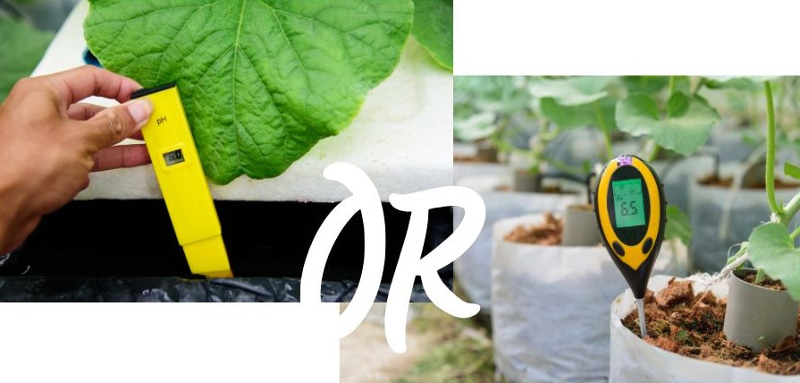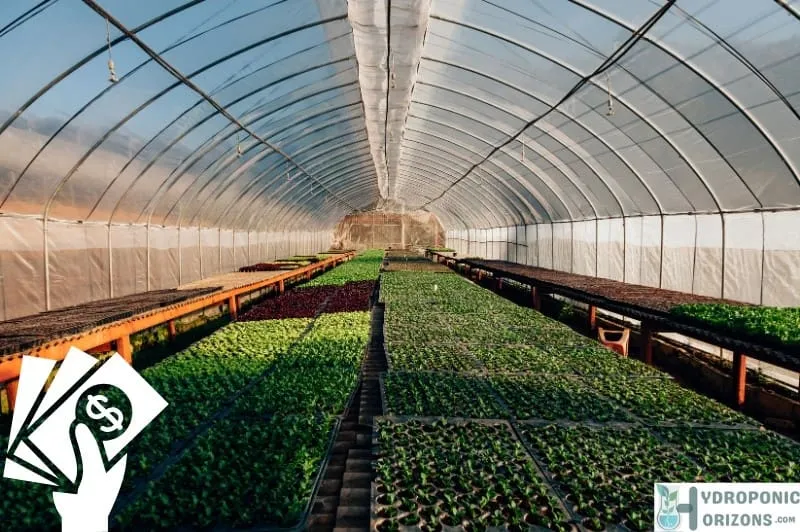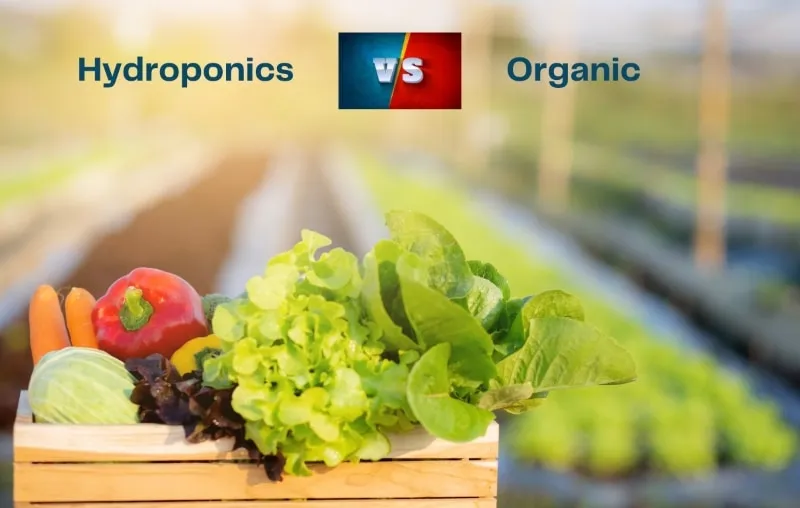Growing your own plants using hydroponics can be a rewarding experience, as it offers several advantages over traditional soil-based gardening. One of the key factors in determining the success of your hydroponic garden is promoting healthy root growth. By focusing on this vital aspect, you’re more likely to have a thriving, productive hydroponic system.
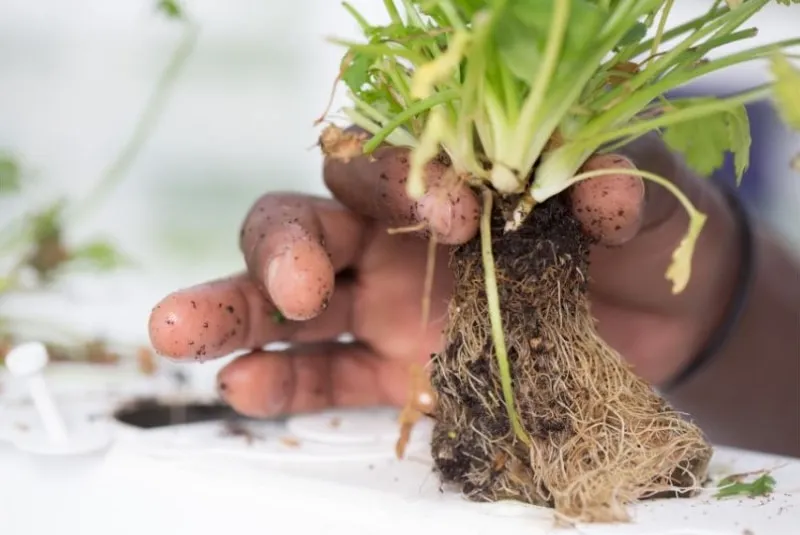
Want to know how to promote root growth in hydroponics? It’s important to pay attention to the essential elements that support your plants’ well-being. These include maintaining a balanced nutrient solution, ensuring optimal water temperature, and providing adequate oxygen to the roots. By carefully monitoring and adjusting these factors, you’ll create an environment that encourages strong, robust root growth, ultimately leading to healthier plants and better yields.
Importance of Root Growth in Hydroponics
Healthy root growth is crucial for your plants in a hydroponic system. Unlike soil-based systems, hydroponics relies on the roots’ ability to effectively absorb nutrients from the water solution to support overall plant health. Let’s explore the significance of root growth in hydroponics and why it matters for your plants.
First, roots in hydroponics play a key role in nutrient uptake. With an extensive root system, your plants have a better chance of obtaining essential nutrients from the solution. This, in turn, helps them grow faster and produce higher yields. Ensuring proper root growth is vital for the success of your hydroponic growing setup.
Another important factor is oxygen. In hydroponics, oxygen is essential for photosynthesis and overall plant health. Developing a strong and healthy root system allows your plants to absorb oxygen more efficiently, leading to improved growth and overall vitality.
Here are a few aspects to consider for promoting healthy root growth:
- Water Temperature: Maintaining an optimal water temperature is critical for root growth. A balanced temperature can help prevent issues like root rot and stunted growth.
- Oxygen Supply: Ensuring there is an adequate supply of dissolved oxygen in the nutrient solution can vastly improve root health.
- Root Trimming: Trimming roots in your hydroponic system can enhance nutrient uptake, encourage new root growth, and keep the system cleaner.
- Nutrient Solution: Providing the right balance of macro and micronutrients is essential for roots to expand and absorb the necessary elements for healthy plant growth.
By focusing on these factors, you’ll be on track to cultivate thriving plants. Remember, a strong and healthy root system is the foundation for successful hydroponic growing.
Hydroponic Systems and Root Growth

Choosing the Ideal System for Root Growth
Hydroponic systems come in various forms, each with its advantages and disadvantages. Some popular types of systems include:
- Aeroponics: In this method, your plants’ roots are suspended in air, and water is misted or sprayed directly onto them with or without using a pump. Aeroponics promotes rapid root growth as it exposes the roots to ample oxygen and nutrients in the mist. Aeroponics can be done with or without a pump.
- Nutrient Film Technique (NFT): NFT systems involve a thin stream of nutrient-rich water continuously flowing over the roots. This provides roots with a constant supply of nutrients and oxygen, encouraging healthy growth.
- Deep Water Culture (DWC): DWC systems are characterized by submerging plant roots in a nutrient-rich solution, with air stones providing oxygen to the solution. In DWC, ample oxygenation is crucial to prevent root rot and promote growth.
- Ebb and Flow: This system periodically floods the grow medium with nutrient solution and then drains it, ensuring roots receive oxygen and nutrients in cycles. This method enables you to effectively control root growth through proper water and nutrient management.
Remember to monitor your hydroponic system closely and follow best practices for healthy root growth by keeping temperatures in the correct range, introducing beneficial bacteria, protecting roots from light exposure, and maintaining a clean and sterile environment.
Optimal Growing Conditions for Roots
Oxygenation and Aeration
Proper oxygenation and aeration of your hydroponic system are essential for healthy root growth. Make sure there is enough oxygen dissolved in the water, as this will prevent root rot and help roots absorb nutrients more efficiently. You can achieve this by using air pumps, air stones, or diffusers. Regularly check and clean your aeration equipment to ensure smooth functioning.
Temperature and Humidity
Monitoring temperature and humidity is crucial for optimal root growth. Maintain a water temperature between 68°F and 72°F, as this range promotes oxygen absorption and nutrient uptake. To maintain stable humidity levels, use a hygrometer and frequently monitor the moisture content around your plants. Aim for a humidity range of 40% to 60%, as high humidity levels can lead to mold and mildew growth.
Light and Photosynthesis
While roots should not be directly exposed to light to prevent algae growth, photosynthesis plays a vital role in providing energy for root growth from above. Ensure your plants receive adequate light by selecting the right spectrum, intensity, and duration based on their specific needs. Use timers and appropriate light sources (e.g., LED, HID, or fluorescent) to provide the right amount of light, promoting both above-ground growth and root development.
Nutrient Solution and pH Level
Balancing your nutrient solution is critical for successful root growth. A well-balanced solution provides your plants with all the nutrients they need. Check the N-P-K ratio and supplement with micronutrients as needed. In addition, maintain a pH level between 5.5 and 6.5 to ensure optimal nutrient absorption. Regularly monitor and adjust the nutrient solution and pH levels to prevent deficiencies or toxicities that could hinder root growth.
Growth Medium
Select a suitable growth medium like Rockwool that provides stability and ample water retention without suffocating the roots. The medium should also support root growth without letting them get entangled or compacted.
Related: These factors are covered in detail in our guide “Hydroponics 101“
Nutrients and Root Development
Essential Nutrients for Root Growth
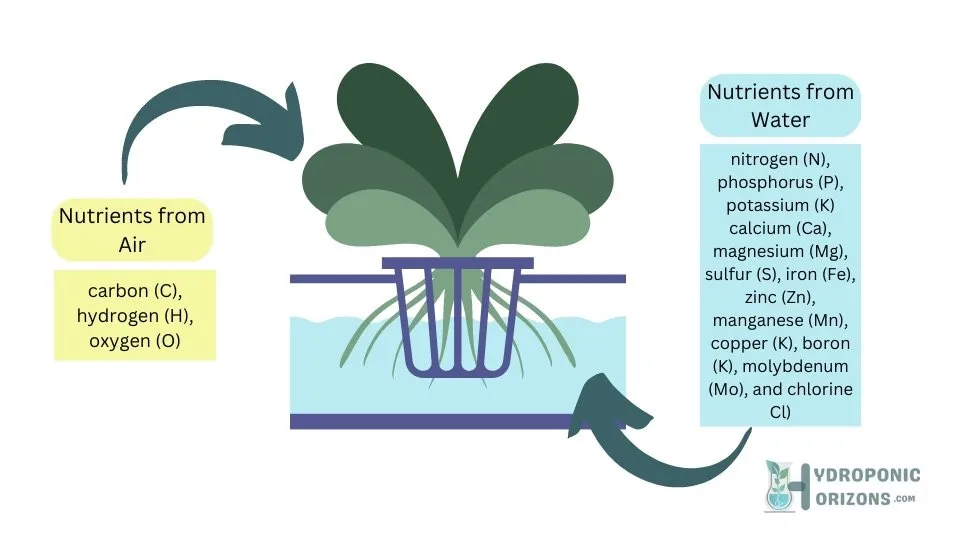
To support healthy root development in your hydroponic system, it is crucial to provide your plants with the essential nutrients they need. These nutrients can be divided into two categories: macronutrients and micronutrients.
Macronutrients are required in larger quantities and include:
- Nitrogen (N)
- Phosphorus (P)
- Potassium (K)
- Calcium (Ca)
- Magnesium (Mg)
Micronutrients, on the other hand, are needed in smaller amounts but are still crucial for plant growth. Some examples of micronutrients are iron, manganese, zinc, boron, molybdenum, chlorine, copper, and nickel.
Ensuring Proper Nutrient Levels
To ensure your plants receive adequate nutrient levels, it’s essential to monitor and adjust the nutrient solution in your hydroponic system. Here are some general tips to keep in mind:
- Regularly test the nutrient concentration of your system using a TDS (Total Dissolved Solids) meter or an EC (Electrical Conductivity) meter.
- Adjust the nutrient levels as needed based on plant species, growth stage, and environmental conditions.
- Keep an eye out for any nutrient deficiencies or toxicity symptoms in your plants, and make necessary adjustments to their nutrient regimen accordingly.
Nutrient Availability and pH Balance
The pH level of your hydroponic system plays a significant role in nutrient availability to your plants’ roots. If the pH is too high or low, certain nutrients may become unavailable, leading to deficiencies or toxicity. To ensure optimal nutrient uptake, maintain the pH level specific to the plants you’re growing – typically, a pH range of 5.5 to 6.5 is suitable for most species.
Use a pH meter to test and monitor the pH levels in your hydroponic system, and adjust them as needed using pH up or down solutions. Regularly monitoring and adjusting the pH balance will help maximize nutrient availability, promoting strong root growth and overall plant health.
Growing Media and Root Environment
Selecting the Right Growing Medium
When choosing the right growing medium for your hydroponic system, it’s crucial to consider your plants’ specific needs. Different media provide various benefits, with some offering better aeration, drainage, and overall support for root growth. A popular choice is Rockwool, which consists of loosely spun fibers that ensure both water and stability for your plants. However, other options such as coco coir, perlite, or clay pebbles can also be suitable for your hydroponic system.
Drainage and Substrate Considerations
Drainage is a crucial aspect of maintaining a healthy root environment in hydroponics. You want to ensure that the medium you choose can retain the right amount of water while also allowing excess moisture to drain away. This balance will help prevent root rot and provide adequate oxygen for optimal growth. Additionally, it’s essential to keep the pH levels in check, as some hydroponic media can help stabilize pH levels in the root zone, ensuring the best conditions for your plants to thrive.
Root Management in Different Growing Media
Managing root growth is vital for achieving success in hydroponic gardening, regardless of the medium you select. Be attentive to your plants’ needs, and ensure they receive adequate oxygenation by incorporating air stones, air pumps, or other aeration methods into your system.
As your plants develop, it might become necessary to transplant them into a different hydroponic setup or introduce them to larger containers. Using starter plugs, like those made from peat or coco coir, can be beneficial when transplanting, as they encourage the roots to grow downward rather than to the sides.

Beneficial Microbes and Root Health
Introducing Beneficial Bacteria and Fungi
In your hydroponic system, beneficial bacteria and fungi play a crucial role in promoting root growth and overall plant health. These microorganisms form a symbiotic relationship with plant roots, enhancing nutrient absorption and protecting against pathogens. To introduce beneficial microbes to your system, you can use specialized products.
Managing Microbial Populations
Once you incorporate beneficial bacteria and fungi into your hydroponics system, it’s crucial to manage their populations for optimal root health. Here are some steps to help them thrive:
- Aerate your nutrient solution with air pumps or air stones to provide sufficient oxygen.
- Maintain optimal water temperature to support microbial activity and root growth.
- Routinely change your nutrient solution to avoid imbalances and prevent waste buildup.
Preventing Root Rot and Disease
Root rot and various diseases can harm your plants, but the right microbial environment can prevent these issues. To safeguard your hydroponic system against pathogens, follow these recommendations:
- Ensure proper sanitation of your equipment and growing environment.
- Maintain a balanced nutrient solution to avoid excess nitrogen, which can cause root rot.
- Keep an eye on the pH level and adjust it as needed to provide optimal conditions for beneficial microbes.
By managing beneficial microbes effectively, you’ll nurture strong and healthy root systems in your hydroponic garden.
Encouraging Root Growth in Seedlings
Important Steps for Root Growth in Seedlings
When it comes to promoting root growth in hydroponic seedlings, there are a few crucial factors you should focus on. This section will guide you through those steps.
Provide Optimal Water Temperature
One of the key elements in encouraging root growth in hydroponic systems is maintaining proper water temperature. Ensure that your plants receive the best support by closely monitoring the water temperature in your hydroponic system.
Ensure Oxygen Availability
Make sure your seedlings are getting enough oxygen. This can be achieved by aerating the water in your hydroponic system, using methods such as adding an air stone or employing the aeroponics method.
Use a Suitable Growing Medium
Selecting an appropriate growing medium can help support root growth in seedlings. For hydroponic systems, Rockwool is a popular option as it provides both water and stability for your seedlings. The loosely spun fibers in Rockwool allow for adequate root growth and stability in a soilless system.
Nutrition for Seedlings
Your seedlings will need the right nutrients to develop healthy roots. In hydroponic systems, the nutrient solution plays a vital role in providing the necessary ingredients for strong root growth. Be sure to use a well-balanced nutrient solution specifically formulated for hydroponics in the early stages of plant development.
Root Enhancement Techniques
Using Root Stimulators Or Rooting Hormones
Root stimulators are an excellent way to boost your plant’s root growth in hydroponics. They provide your plants with essential nutrients and compounds that encourage strong, healthy root development. To start, choose a high-quality root stimulator product and follow the manufacturer’s recommended dosage. Add the root stimulator to your nutrient solution and observe improved root growth in your hydroponic system. This will lead to healthier, more vigorous plants.
Rooting hormones can also be used to promote faster root growth and propagation in your cloned hydroponic plants as opposed to those started from seeds. These hormones are typically available in gel, liquid, or powder form and can be applied directly to the plant cuttings or as an additive in the nutrient solution. This will help your plants establish a strong root system quickly, leading to healthier plants and increased yields. Follow the manufacturer’s instructions for use and dosage to ensure the best results.
Related: Eager to start propagating? Our buying guide can help you figure out which rooting hormone is the best for your plants.
Proper Trimming and Care
Taking good care of your plants is crucial for their overall health and root growth. Proper trimming and pruning will help prevent root rot and enhance the growth of the root system. Remove dead or damaged foliage, and try to keep the roots free from dead plant material. By doing so, you’ll ensure that the roots have enough space and energy to grow efficiently.
Advanced Root Management
Aeroponics and Oxygenation
In aeroponics, your plants’ roots are suspended in air and periodically misted with nutrient-rich water. This method promotes oxygenation, which is vital for healthy root growth. Oxygenation enhances root development by allowing beneficial microbes to thrive, ultimately leading to better nutrient uptake and faster plant growth. So, when you’re aiming for optimal root growth in your hydroponic system, make sure to provide adequate airflow and oxygen to your plant roots.
Combating Toxins and Strain with Root Management
Roots are prone to accumulating toxins and experiencing strain, which can negatively affect plant health. To combat these issues, introduce beneficial bacteria to your reservoir, which help in breaking down toxins and maintaining a healthy root environment. By managing root health proactively, you can mitigate the strain on the plants and create a more hospitable environment for them to grow to their full potential.
By following these hydroponic root management best practices and understanding the importance of oxygenation and combating toxins with efficient root management, you’ll be better equipped to achieve healthy root growth and an overall successful hydroponic garden.

